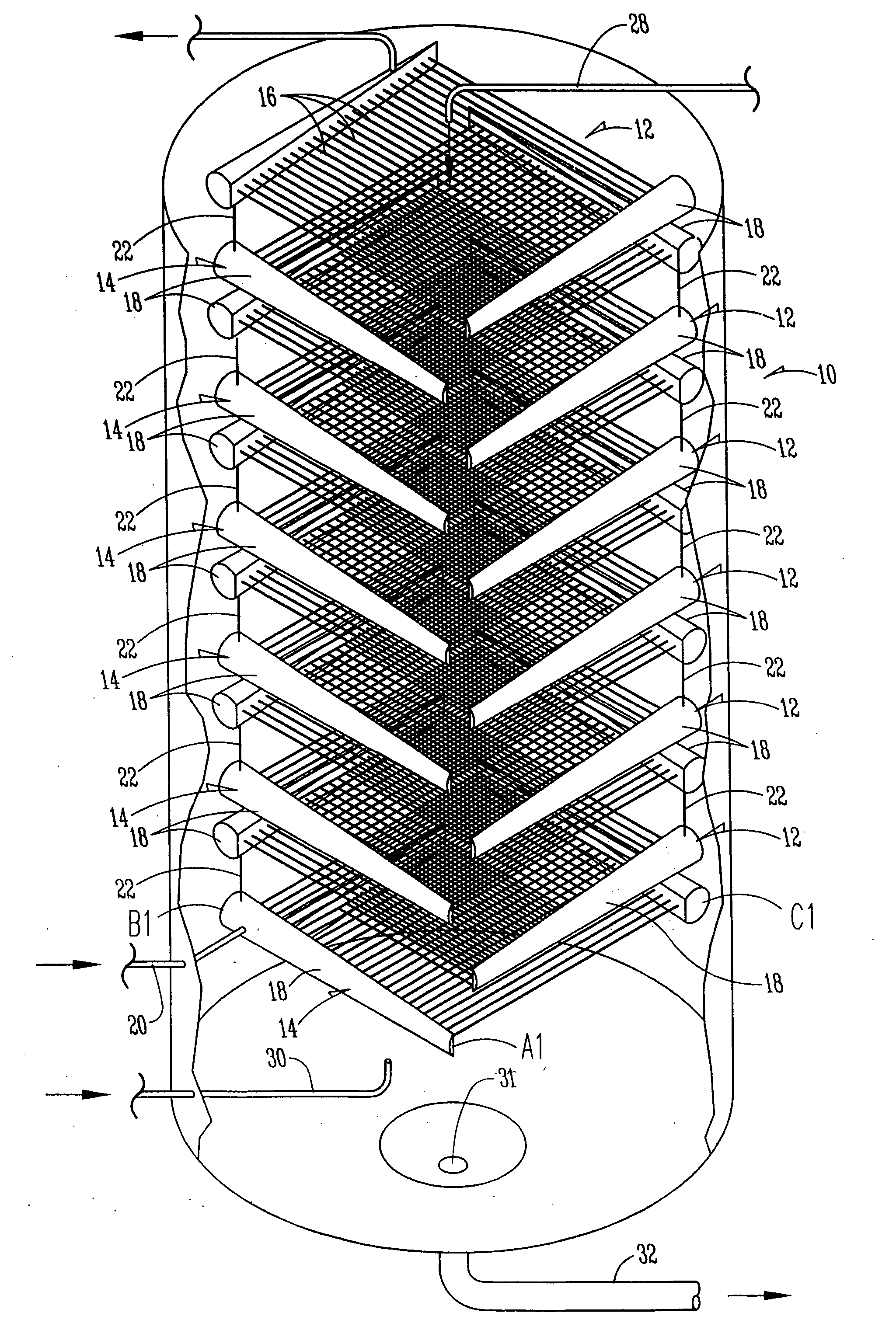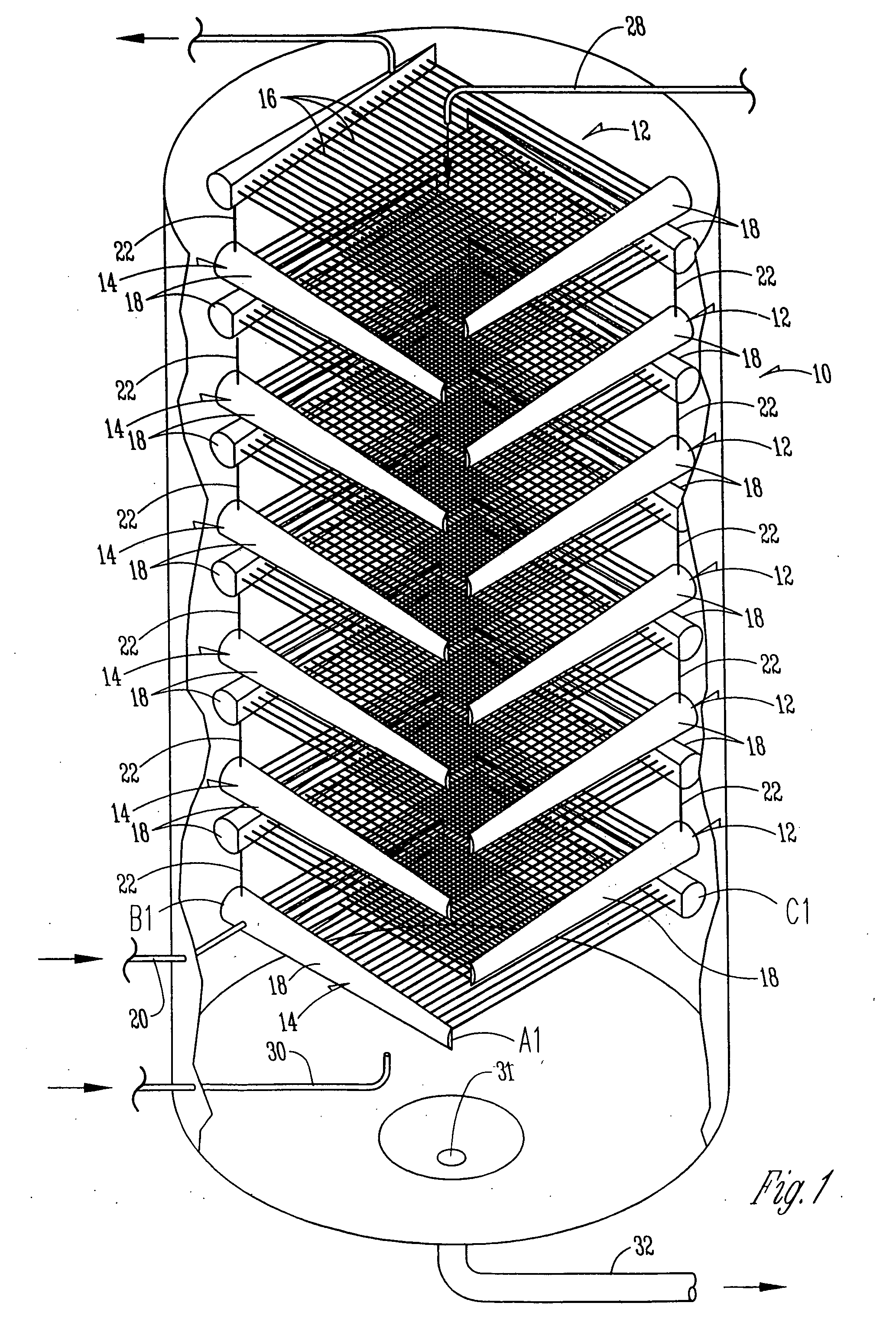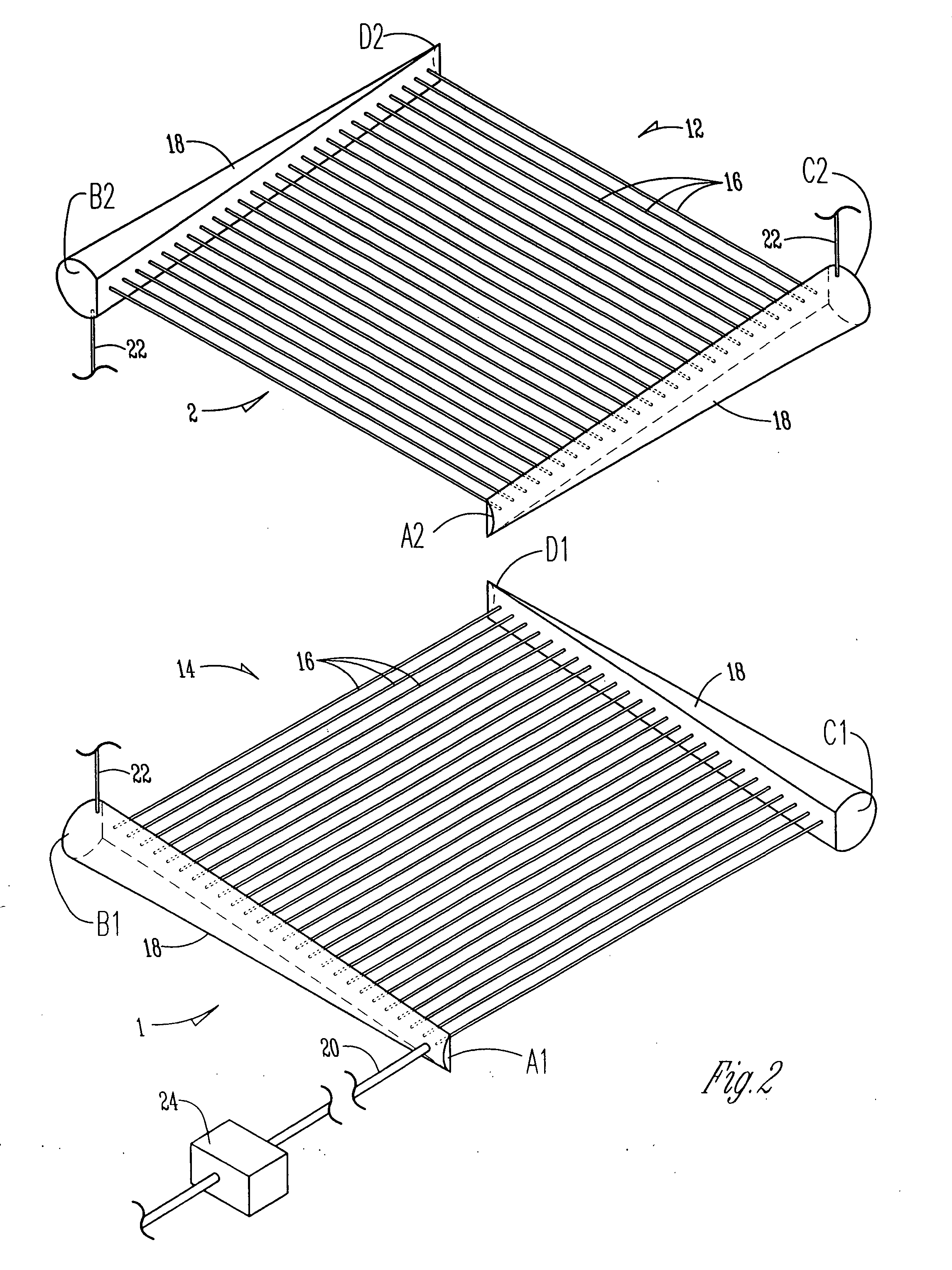Method and means for miniaturization of binary-fluid heat and mass exchangers
- Summary
- Abstract
- Description
- Claims
- Application Information
AI Technical Summary
Benefits of technology
Problems solved by technology
Method used
Image
Examples
Embodiment Construction
[0021] With reference to FIG. 1, the numeral 10 designates a support structure wherein alternate groups of coolant tubes 12 and 14 (FIG. 1) are mounted in spaced vertical relation in structure 10. Each group 12 and 14 is comprised of a plurality of small diameter coolant tubes 16 which extend between opposite headers 18. (FIGS. 1 and 2). The orientation of the tubes 16 in group 12 is at right angles to the orientation of tubes 16 in group 14 (FIG. 2). The tubes 16 in each group are in fluid communication with headers 18.
[0022] Hydronic fluid is introduced into the lowermost group of tubes at 20 (FIG. 1), and successive groups are fluidly connected by conduits 22.
[0023] The short lengths of very thin tubes 16 (similar to hypodermic needles) are placed in an approximately square array. This array forms level 1 (FIG. 2), depicted by the square A1-B1-C1-D1. The second array (level 2) of thin tubes 16 is placed above level 1, but in a transverse orientation perpendicular to the tubes i...
PUM
 Login to View More
Login to View More Abstract
Description
Claims
Application Information
 Login to View More
Login to View More - R&D
- Intellectual Property
- Life Sciences
- Materials
- Tech Scout
- Unparalleled Data Quality
- Higher Quality Content
- 60% Fewer Hallucinations
Browse by: Latest US Patents, China's latest patents, Technical Efficacy Thesaurus, Application Domain, Technology Topic, Popular Technical Reports.
© 2025 PatSnap. All rights reserved.Legal|Privacy policy|Modern Slavery Act Transparency Statement|Sitemap|About US| Contact US: help@patsnap.com



